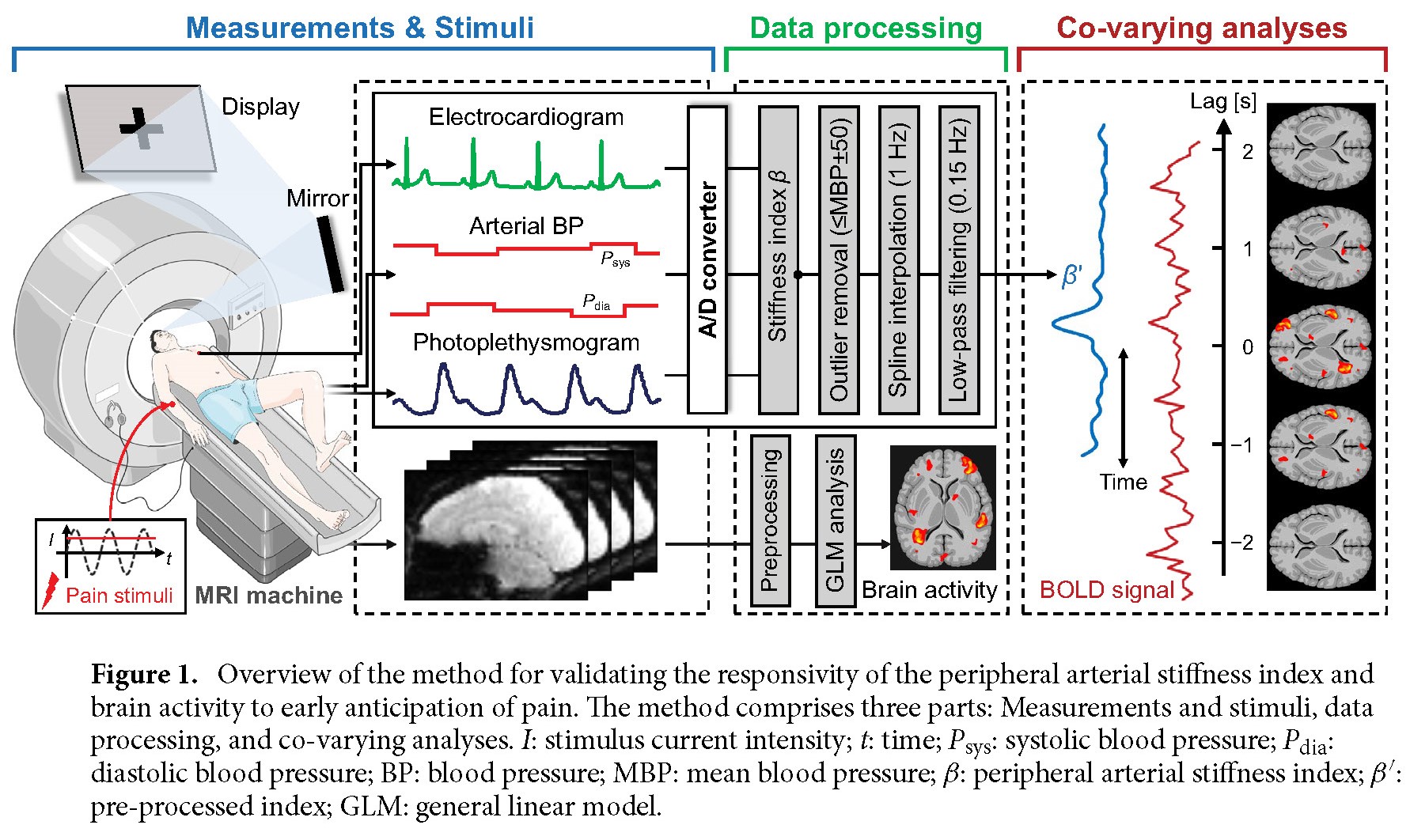Scientific Reportsは科学雑誌Natureなどを出版するSpringer Nature社刊行のオープンアクセスジャーナルで,自然科学全般をカバーする世界最大級の学術雑誌です.
Scientific Reportsでは1年間に最もダウンロード数の多かった上位100論文を各分野ごとに「Scientific Reports Top 100」として公開しています.
https://www.nature.com/srep/highlights/top-articles
以下の論文が2024年のNeuroscience分野で第46位に選出されました.今後も引き続き,魅力的な研究論文を世界に向けて発信できればと思います.

Neuroimaging-based Evidence for Sympathetic Correlation between Brain Activity and Peripheral Vasomotion during Pain Anticipation
Ziqiang Xu, Zu Soh, Yuta Kurota, Yuya Kimura, Harutoyo Hirano, Takafumi Sasaoka, Atsuo Yoshino, and Toshio Tsuji
Scientific Reports, volume 14, Article number: 3383, doi.org/10.1038/s41598-024-53921-4, Published online: 09 February 2024. (SCI, IF=4.6)
URL: https://www.nature.com/articles/s41598-024-53921-4
PDF: https://www.nature.com/articles/s41598-024-53921-4.pdf
Anticipation of pain engenders anxiety and fear, potentially shaping pain perception and governing bodily responses such as peripheral vasomotion through the sympathetic nervous system (SNS). Sympathetic innervation of vascular tone during pain perception has been quantified using a peripheral arterial stiffness index; however, its innervation role during pain anticipation remains unclear. This paper reports on a neuroimaging?based study designed to investigate the responsivity and attribution of the index at different levels of anticipatory anxiety and pain perception. The index was measured in a functional magnetic resonance imaging experiment that randomly combined three visual anticipation cues and painful stimuli of two intensities. The peripheral and cerebral responses to pain anticipation and perception were quantified to corroborate bodily responsivity, and their temporal correlation was also assessed to identify the response attribution of the index. Contrasting with the high responsivity across levels of pain sensation, a low responsivity of the index across levels of anticipatory anxiety revealed its specificity across pain experiences. Discrepancies between the effects of perception and anticipation were validated across regions and levels of brain activity, providing a brain basis for peripheral response specificity. The index was also characterized by a 1?s lag in both anticipation and perception of pain, implying top?down innervation of the periphery. Our findings suggest that the SNS responds to pain in an emotion?specific and sensation?unbiased manner, thus enabling an early assessment of individual pain perception using this index. This study integrates peripheral and cerebral hemodynamic responses toward a comprehensive understanding of bodily responses to pain.
痛みの予期は不安と恐怖を引き起こし、痛みの知覚を形成し、交感神経系(SNS)を介して末梢血管運動などの身体反応を制御する可能性がある。疼痛知覚時の血管緊張の交感神経支配は、末梢動脈硬化指標を用いて定量化されているが、疼痛予知時の交感神経支配の役割は不明なままである。本論文では、予期不安と疼痛認知の異なるレベルにおけるこの指標の反応性と帰属性を調べるために計画された神経画像に基づく研究について報告する。この指標は、3つの視覚的予期合図と2つの強さの疼痛刺激をランダムに組み合わせた機能的磁気共鳴画像法による実験で測定された。痛みの予期と知覚に対する末梢反応と大脳反応を定量化し、身体反応性を裏付けるとともに、その時間的相関を評価し、指標の反応帰属を明らかにした。痛覚のレベルによる反応性の高さとは対照的に、予期不安のレベルによる反応性の低さは、痛覚経験による特異性を明らかにした。知覚と予期との間の不一致は、脳活動の領域とレベルにわたって検証され、末梢反応の特異性の脳内基盤を提供した。また、この指標は、痛みの予期と知覚の両方に1秒の遅れがあることが特徴であり、末梢へのトップダウン的な支配を示唆していた。この結果は、SNSが情動に特異的で感覚に偏りのない方法で痛みに反応することを示唆しており、この指標を用いて個人の痛み知覚を早期に評価することが可能である。本研究は、痛みに対する身体反応の包括的な理解に向けて、末梢と大脳の血行動態反応を統合したものである。



